
Book Review | The Bounty Hunter Wars
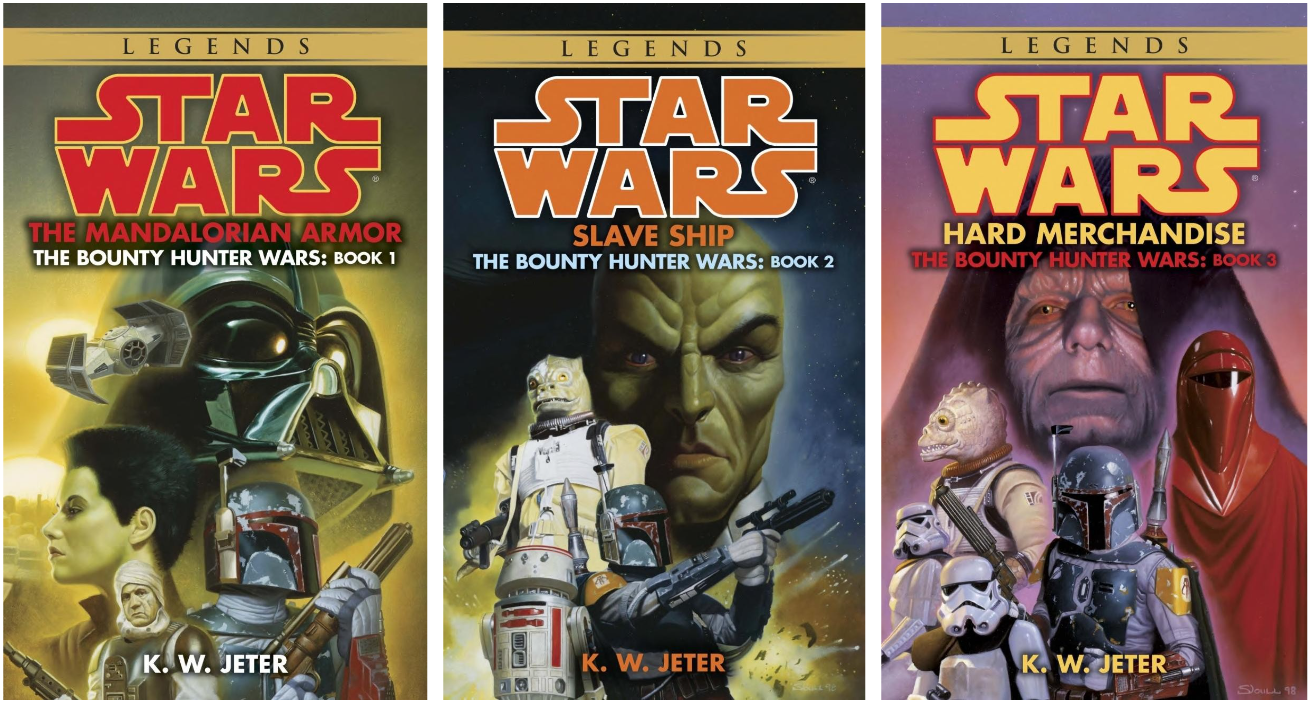
Good grief these books are bad.
Oh, um, I mean:
This December I'm doing a 30-year retrospective on Star Wars: The Crystal Star, often named the worst Star Wars book ever written. As part of my attempt to determine if that reputation is deserved, I'm going back to some of the less-remembered entries in the Star Wars library, the ones that aren't likely candidates for an Essential Legends Collection re-release. Are they bad or just overlooked?
| The Mandalorian Armor | Slave Ship | Hard Merchendise | |
|---|---|---|---|
| Author: | K.W. Jeter | ||
| Publisher: | Bantam Spectra | ||
| Length: | 387 pages | 336 pages | 358 pages |
| EE Critic Score: | 3/10 | 2/10 | 3/10 |
The Bounty Hunter Wars, comprising the books The Mandalorian Armor, Slave Ship, and Hard Merchandise, is a series of books written by K. W. Jeter, published in 1998 and 1999, during the final years of what's come to be remembered as the "Bantam Era" of Star Wars books. They tell a story involving Boba Fett and several other of the bounty hunters portrayed in that odd, abortive scene in The Empire Strikes Back wherein Darth Vader assembles a team to pursue the Millennium Falcon through the asteroid field surrounding Hoth. The story is a complicated one, taking place across two time periods (roughly concurrent with The Empire Strikes Back and Return of the Jedi, respectively) and involving the Bounty Hunter's Guild, the crime lord Prince Xizor, the Emperor, an independent bounty broker, and the leader of Imperial military hardware contractor Kuat Drive Yards all conspiring against each other as a Rebel victory looms in the background. Many of the characters featured in these books had previously appeared in such works as Tales of the Bounty Hunters, The Courtship of Princess Leia, and Shadows of the Empire, which Jeter was clearly at least aware of but which he took some liberties in adhering to.
Analysis
So, in doing this whole Road to Waru project, looking back at forgotten or hated '90s Star Wars books, I was getting kind of nervous that I didn't hate anything. Now, there are Star Wars books that I really don't like, the most relevant of which to this project being the Jedi Academy books, but I haven't read those in a long time. The ones I was reading ranged from odd but kind of interesting (the Callista trilogy) to actually quite good and underappreciated (the Black Fleet Crisis). I've read The New Rebellion relatively recently, but while I didn't like that, I didn't hugely dislike it, either. I like Star Wars, which is why I write about it so much, but, because I like Star Wars, I often worry that I'm not hard enough on the things I review. Either I totally love them or I make sort of equivocating admissions that they're not very good even though I still liked parts. While I want to give my genuine thoughts, sometimes I really worry that I'm...miscalibrated, I guess. And then I read these books, and I rediscovered the fact that I like Star Wars because Star Wars is usually pretty good, even if it's not perfect; sometimes, though, Star Wars can be genuinely bad, and I can still tell. The Bounty Hunter Wars is bad Star Wars.
These books aren't really the kind of bad that gives me a lot to say about them, so this review will be pretty short. One thing to know upfront is that these books were not a tentpole Star Wars project, nor were they anybody's passion project. I am willing to grade these on a bit of a curve, knowing that they were meant to appeal mainly to existing fans and weren't meant to be masterpieces. K.W. Jeter was a known author. He was buddies with Philip K. Dick, as well as with James P. Blaylock and Tim Powers; with the latter two he would found (and himself name) the "steampunk" sub-genre. Outside of these Star Wars books, he wrote steampunk or cyberpunk novels, including some sequel novels to the film Blade Runner, which was based on a Dick novel. I haven't read anything else he wrote, but from what I can gather he's known for kind of sleazy books with body horror themes, and in recent year's he's switched to writing action thrillers under a pseudonym.
I don't want to be too hard on Jeter here, since I think writing these books mattered to him primarily as a paycheck and I'm sure his own original books got a lot more effort and are probably better. But I will say that the main thing wrong with the Bounty Hunter Wars books is simply that they're written very, very poorly. They are almost exhausting to read. The story told has the potential to be fairly exciting, but they way it's told completely dulled my mind as I read. If I hadn't had this larger project to do or this review to write, I'd have quite reading mid-way through the first book.
There are three books, which is really the first problem, because there's story enough here to fill about one. Things are told in two timelines: in one, taking place concurrently with Return of the Jedi, the bounty hunter Dengar and Neelah, a dancer from Jabba's palace, rescue a badly injured Boba Fett from the Sarlacc, and are brought along for the ride when Fett goes after a powerful corporate leader; in the other, taking place between A New Hope and The Empire Strikes Back, told in flashback, we hear of Fett's role in the breakup of the Bounty Hunter's Guild, as orchestrated by Prince Xizor of the Black Sun crime syndicate. When you read the words "The Bounty Hunter Wars" you picture a conflict between bounty hunters; Marvel quite recently had something called "War of the Bounty Hunters" in their comics, and that's what that was, a bunch of bounty hunters all fighting over Han Solo's carbonite-frozen form in order to collect his bounty from Jabba. We don't get many scenes of that. If you pick up a book about bounty hunters, you might expect that the plot would revolve around bounty hunting, but no, across three books there are two bounty hunts featured, only one of which is really central to anything. The bulk of the books' pages are spent in either scenes of dialog or, more distressingly, scenes of monolog. It's difficult to explain what I mean without giving some examples:
Soon enough, Xizor promised himself. He and all the rest of Black Sun had only to wait, and craftily move into their final positions the pawns that were already arrayed on the great gameboard of the universe. The arachnoid arranger Kud’ar Mub’at’s web of plans and schemes was nothing compared to the one that Xizor had woven, a net cast across worlds and entire systems of worlds. Neither Emperor Palpatine nor his dark henchman Lord Vader had any comprehension of Black Sun’s reach, the things that were in its grasp already or the ones that its fist was about to close upon. For all of Palpatine’s vaunted claims of knowledge of the Force and its dark side, he was still blind to the machinations and maneuverings taking place virtually under his nose. That was due, Xizor figured, to the old fool’s own greed and ambition, and to his perpetual undervaluing of any other creature’s intelligence. The Imperial court of Palpatine, on the distant world of Coruscant, was stuffed with flunkeys and witless servants; their master had made the mistake of assuming that everyone else was either a dolt like them or a mysticism-addled thug like Vader.
The memory of the Dark Lord’s invisible grip upon Xizor’s throat, squeezing out the breath from his lungs, was still sharp and humiliating; he didn’t believe in that mysterious Force, not the same way that Vader and the Emperor did, but he had still been compelled to acknowledge something of its cruel power. Mind tricks, brooded Xizor, that was all it had amounted to. But that had been enough—more than enough—to reignite his hatred for Darth Vader. That hatred had been born in the deaths of Xizor’s family members, deaths for which he held Vader personally responsible. Behind all his other ambitions, the goals of conquest and domination toward which he’d mercilessly driven Black Sun, there lay a smaller, more personal one: to make sure that Lord Vader paid the ultimate price for his deeds against the blood of a Falleen prince.
That is an excerpt from Hard Merchandise. The full scene runs much longer and it's all Xizor musing like that about how much smarter he is than everybody else. And this is the third book. Two books had proceeded with similar scenes, not just from Xizor's perspective, but Bossk's, Neelah's, Cradossk's, Kuat of Kuat's, and most especially Kud'ar Mub'at's, the spidery broker who does nothing but talk and think and muse. Mub'at thinks quite a lot about how one of his underlings is bound to overthrow him someday, and how he should really get around to getting rid of said underling one of these days, but he never does, so when he is finally overthrown, it's not a shock, but a relief, that the foreshadowing is over at long last.
Throughout the books, conversations drag on well past when the point has been made, both to the characters and to the audience. Dialog is padded out largely with veiled threats and assertions of intelligence, neither of which really pay off. Too many different schemes are going on at once. Every perspective character has some grand orchestration that they're slowly unraveling, even the ones who are supposed to be hot-headed and impulsive. Characters constantly get re-established, leading to a lot of redundant passages describing them, their histories, etc. I wound up skimming over passages because of how the same points would get restated over and over again. I don't tend to do that while reading novels, even if I don't like them, but here I just couldn't bring myself to read the same statements over and over again.
Besides simply not being as exciting as Boba Fett stories really should be, the palace intrigue within the Bounty Hunters' Guild irks me for another reason: I don't like the idea of the Guild. I'm not sure where, exactly, the idea came from; it got mentioned in some of the stories in Tales of the Bounty Hunters, but I suspect it came from the Star Wars RPG, which maybe needed a faction for bounty hunters to be a part of for game mechanics to work. I'm not sure when exactly it was first mentioned; Wookieepedia states that the Guild originated in The Mandalorian Armor, but that's untrue; it was first actually shown in these books, but it had been mentioned before. In any case, I don't like the idea that bounty hunters are largely subject to an independent governing body with bylaws and taxes, etc. Bounty hunters shouldn't be their own faction in the Galaxy; they should be independent agents working in other factions. There's a reason that the first bounty hunter we see in Star Wars is given the very subtle name "Greedo": they're meant to be rather selfish. And indeed, the break-up of the Guild in these books hinges on the fact that bounty hunters are naturally independent, competitive people, disloyal to one another. But it seems very unclear how the Guild could have come together in the first place.
Actually, the break-up of the Guild isn't even the climax of these books; it happens in stages, with the final collapse of the organization occurring mostly off-page. The climax, or, at least, the big thing that happens right before the last book ends, is actually the culmination of a different case of palace intrigue, this one centered around Kuat Drive Yards, the company that makes the Empire's star destroyers and other naval craft. It turns out that Xizor had tried to take control of KDY at some point and that, in retaliation, the head of KDY, a fellow named Kuat of Kuat, had tried to frame Xizor for the murders of Owen and Beru Lars in hopes that Luke Skywalker would take revenge on him; this ploy hadn't worked, though Xizor and Skywalker would become enemies regardless. Boba Fett had found evidence of the frame-up, as well as a Kuati noble who had been mind-wiped and sent to Jabba's palace as a dancing girl, and had gone to confront Kuat out of what seems to be simple curiosity regarding what he was up to. Kuat tries to blow up his shipyards, which he believes will be seized soon by the Empire, but Fett prevents this in order to ask Kuat his questions. This whole thing is very complicated and it's unclear to me what, exactly, Kuat or Fett were hoping to achieve. By the end of Hard Merchandise I was most thrilled that I was done reading these books.
Overall, these books really felt like franchise slop to me. I'll freely admit I might have understood them better if I'd paid a bit closer attention, but I feel that I put about as much effort into my reading of them as is proportional to the effort that went into their creation. Just look at the covers again:
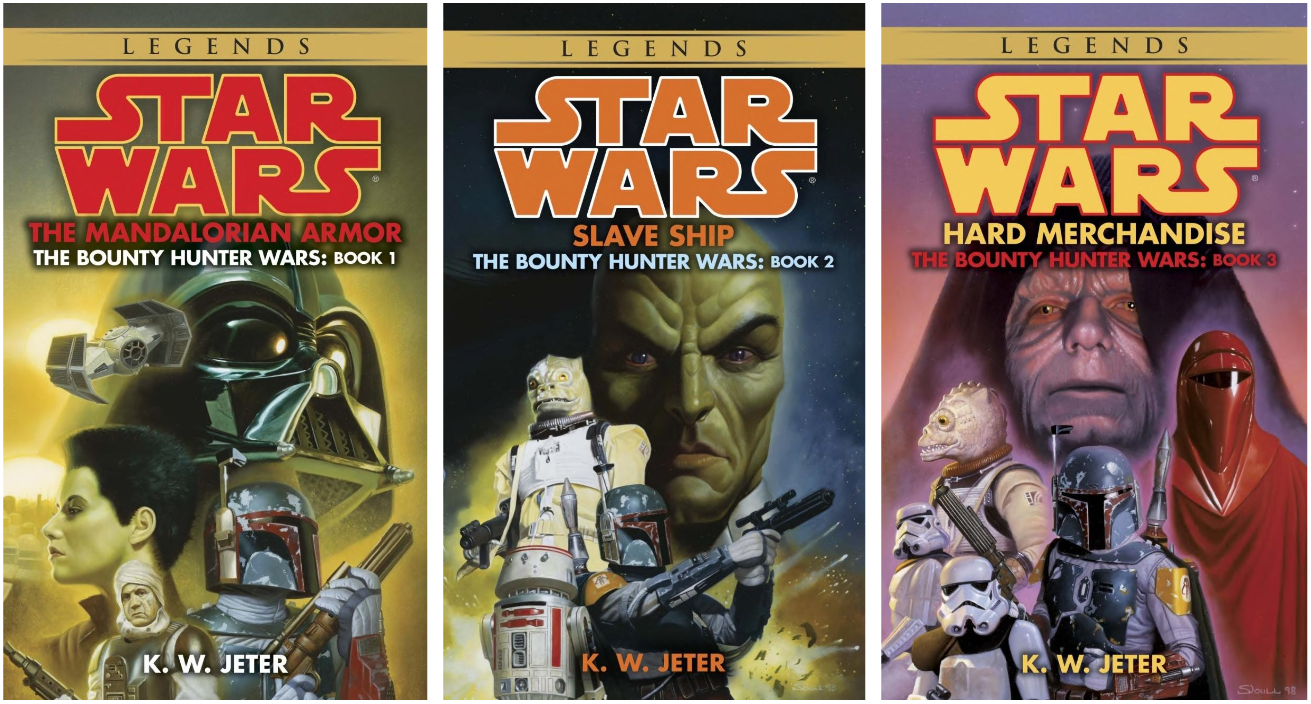
The covers were done by Stephen Youll, who also did the covers for the Tales From... anthologies. They are each assembled from film stills, with some original artwork of characters that weren't in the film that doesn't quite match the more photo-quality look of the characters that were. Each cover features prominently something that isn't at all in the book: The Mandalorian Armor has Vader's TIE Advanced starfighter (Vader himself appears, though only as a cameo); Hard Merchandise has a royal guardsman; and most inexplicably, Slave Ship has R5-D4. Slave Ship also has something on the back cover notable by its absence in the pages: the publisher's summary is as follows:
He's both feared and admired, respected and despised. Boba Fett is the galaxy's most successful bounty hunter. Now he finds himself hunted in the oldest game of all: survival of the fittest.
The once powerful Bounty Hunter's Guild has been shattered into warring factions. Now the posting of an enormous bounty on a renegade Imperial stormtrooper is about to start a frenzy of murderous greed. Hoping to fuel rumors of his death, Boba Fett abandons his ship, Slave I, and sets out to claim the prize. Yet his every move leads him closer to a trap set by the cunning Prince Xizor. Fett will die before becoming Xizor's pawn in the Emperor's war against the Rebels. And he may have to. For in order to gain his freedom he must outwit a sentient weapon that feeds on Human spirits. Then he must escape a galaxy of deadly enemies who want to make the rumors of his death a reality.
Now I could quibble with a lot of that; I don't think Fett is really being hunted, per se, nor do I think Xizor is using him in the Emperor's war against the Rebels in anything but the loosest since. But the mention of "a sentient weapon that feeds on Human spirits" is blatant false advertising. Nothing of the sort is in the book. I'm not even sure what that could be referring to. My best guess is that something matching that description existed in an early draft and it didn't get removed from the summary because there was only ever one draft of that written. Bantam wanted books about Boba Fett to stock on store shelves, and they got that. I don't think that they cared much about what was inside or even what was on the back so long as Boba Fett was on the front.
I will say that it was sort of interesting to see such a focused portrayal of Boba Fett from the time before Attack of the Clones and Karen Traviss recontextualized the character. Although here he is mostly just mentioned as stoic and unfeeling. These are traits that Dave Wolverton had already established in Dengar, who Jeter instead characterizes as lovesick and wanting to retire. Fett is not a deep character here, not really a character who can carry three books. But that's what the character was at this point.
And, again, I am willing to believe that Jeter was treating these books as a quick paycheck and wasn't really bringing his A-game as a writer. There were something that stood out as evidence of a unique authorial voice: the body horror. Jeter was known for that in his own work, especially Dr. Adder. Here he features a particularly gruesome cyborg named D’harhan, mutated cyborg miners, and a lobotomized cat that Kuat of Kuat keeps as a pet, all of which are described in pointedly lurid detail, standing out all the more against the dull grayish writing of the rest of the books. I didn't exactly like these weird details, but I liked that there were weird details.
One more thing: somehow, these books, these very poor, cheaply churned out books, have a deluxe collector's edition. You can, exclusively at Barnes & Noble, get a nice, leather-bound volume collecting these three books, with silk bookmark and silver-edged pages and everything. B&N has this "Collectible Editions" line featuring a wide range of books; I myself have two volumes, one collecting Doyle's complete Sherlock Holmes stories, the other collecting the novelizations of the Star Wars Original Trilogy (which are, admittedly, also not great as Star Wars books go, but are at least notable).
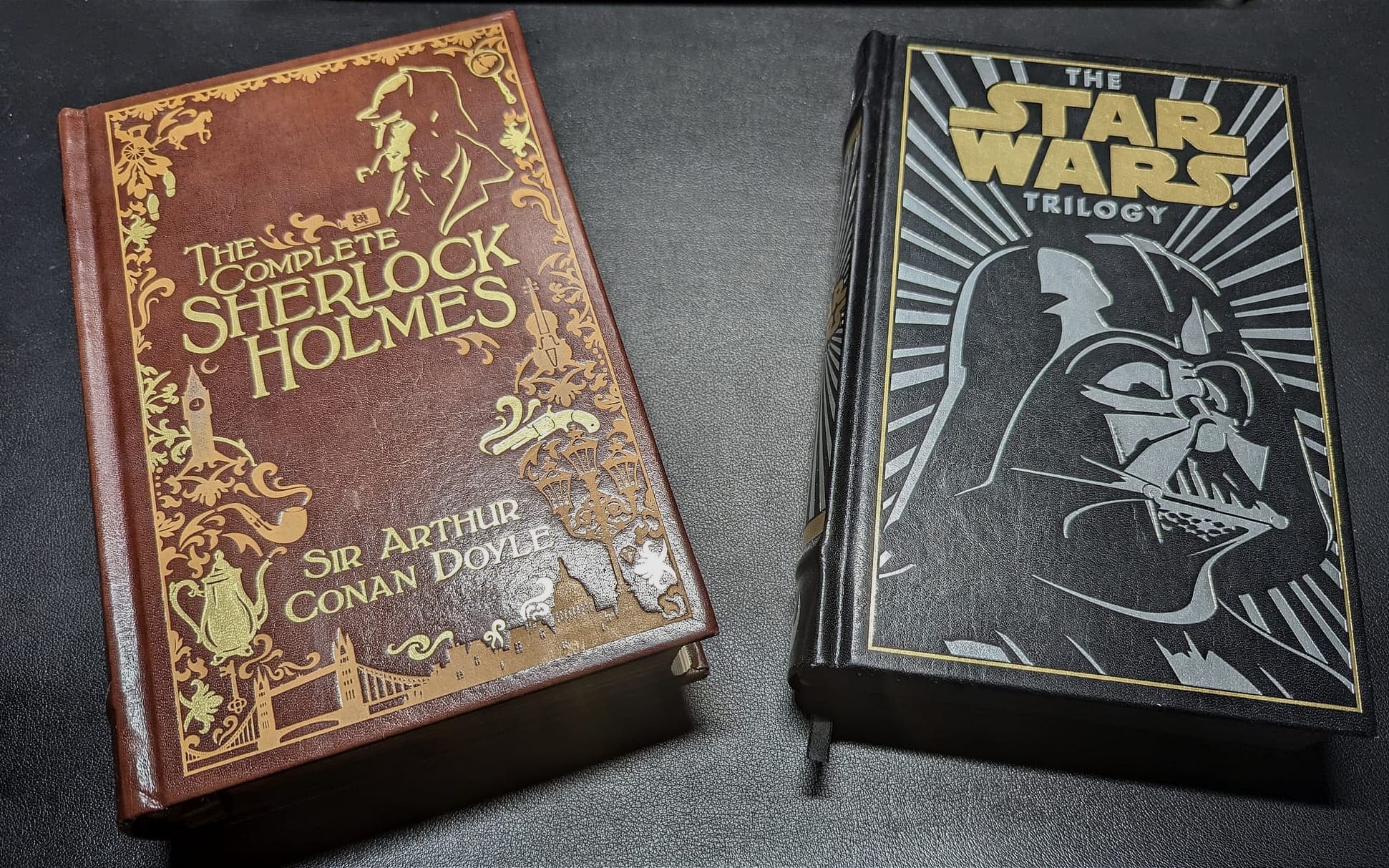
The only other Star Wars books to get this treatment are Foster's The Approaching Storm and Miller's Kenobi, which got bundled together in a volume of Obi-Wan novels (making Kenobi the only really good Star Wars novel to get a B&N Collectible Edition). That these forgotten, crappy Boba Fett books have gotten the same treatment as The Great Gatsby and The Iliad is endlessly funny to me.
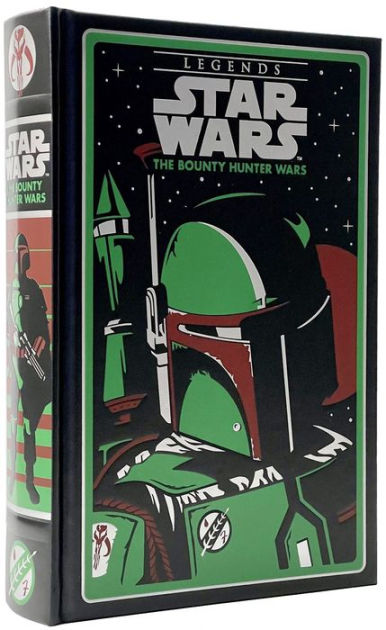
Not an affiliate link. Do not buy this book.
Recommendation & Rating
Do not read these books. I cannot recommend them to even the most devoted Boba Fett fan, much less to anyone else. If you want to get that Collectible Edition because you think it would look cool on your shelf, I suppose I can't stop you, but don't ever open it. These books are miserable tedium to read, interrupted, rarely, only by unpleasant gross-out moments. The story told is convoluted, amoral, and ultimately inconsequential. I will give the first and third a bit of credit for an interesting idea apiece, but the second book has nothing really to recommend it, and certainly if it weren't for my determination to write this review I'd have quite reading before making it half-way through the first. The Bounty Hunter Wars trilogy features little bounty hunting, less war, and much pondering and plotting by figures whose success or failure seems utterly meaningless.
I give The Mandalorian Armor and Hard Merchandise
3
/10 — With some meaningful positive worth, but overall a poor enough experience to recommend against engagement by the reader
I give Slave Ship
2
/10 — Without significant positive worth, but able to be engaged with enough to research a proper review.



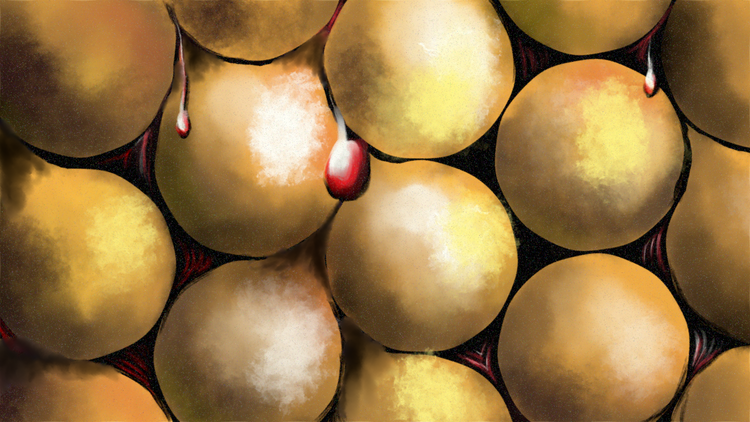


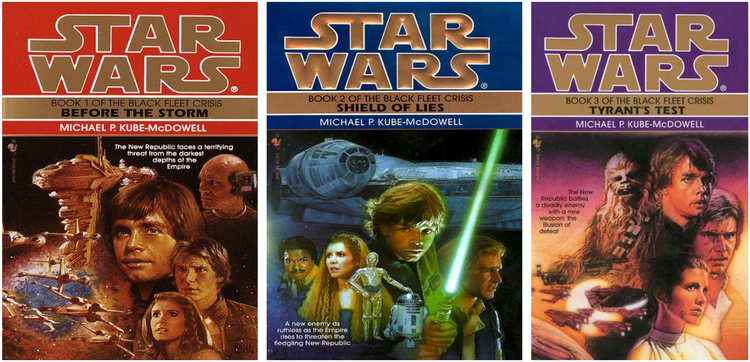
Member Commentary